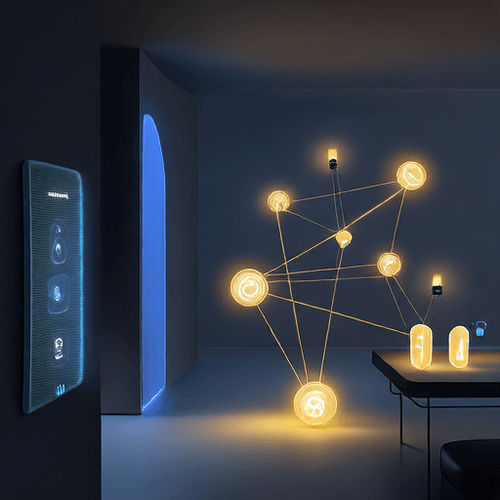Building a Robust Zigbee Network with Home Assistant's ZHA Integration

Introduction
In the world of smart homes, Zigbee is a cornerstone technology for its low power consumption, mesh networking capabilities, and wide range of compatible devices from various manufacturers. While other options exist, Home Assistant offers a powerful, integrated solution for managing Zigbee devices directly through its official ZHA (Zigbee Home Automation) integration. ZHA provides a direct interface between Home Assistant and your Zigbee coordinator hardware, allowing for local control without reliance on external bridges or cloud services.
Choosing ZHA means leveraging the core capabilities built into Home Assistant for device management, automation, and monitoring. It simplifies the setup process for many common devices and benefits from ongoing development within the Home Assistant project itself. This article will guide you through setting up ZHA, integrating devices, and maintaining a healthy Zigbee network for a reliable smart home.
Prerequisites: Choosing Your Zigbee Coordinator
To use ZHA, you need a compatible Zigbee coordinator. This is a piece of hardware that connects to your Home Assistant instance (usually via USB or network) and communicates directly with your Zigbee devices. The choice of coordinator is crucial for performance and compatibility.
- Recommended Coordinators: Look for devices based on modern chipsets like Texas Instruments CC2652P/R or Silicon Labs EFR32MG21. Popular options include:
- Sonoff Zigbee 3.0 USB Dongle Plus (P or E version)
- Home Assistant SkyConnect
- Slaesh's CC2652RB stick
- CC2531 (Older, not recommended for large networks due to limitations)
- Connectivity: USB dongles are most common, but some network-attached coordinators exist. Ensure your chosen coordinator is supported by the ZHA integration.
Once you have your coordinator hardware, connect it to the machine running Home Assistant. Note the device path (e.g., /dev/ttyACM0 on Linux, COMx on Windows, or the network address).
Setting Up the ZHA Integration in Home Assistant
Integrating ZHA is straightforward:
- In Home Assistant, go to Settings -> Devices & Services.
- Click the + Add Integration button in the lower right corner.
- Search for "ZHA" and select it.
The configuration flow will start:
- Serial Port: Select the serial port your Zigbee coordinator is connected to. If it's a USB device, Home Assistant often auto-detects it. If not, you'll need to manually enter the path. For network coordinators, enter the connection details.
- Radio Type: Select the type of radio chipset your coordinator uses (e.g., EZSP for Silicon Labs like SkyConnect, ZNP for Texas Instruments like Sonoff). Home Assistant usually suggests this based on the detected hardware.
- Advanced Configuration (Optional but Recommended):
- You can set a Network Key. While ZHA can generate one, setting your own allows for easier recovery or migration later. Keep this key secure!
- Choosing a Zigbee channel. Default is often 11. If you experience interference (e.g., from Wi-Fi on channels 1 or 6), you might try channels 15, 20, or 25, which are typically less congested by Wi-Fi. Ensure the chosen channel doesn't conflict with your Wi-Fi setup.
- Follow the remaining prompts to complete the setup. ZHA will initialize the coordinator and form the Zigbee network.
Pairing Your First Zigbee Devices
Once ZHA is set up, you can start adding devices:
- In ZHA integration settings (Settings -> Devices & Services -> ZHA -> Configure), click the "ADD DEVICE" button.
- Home Assistant will start scanning for devices trying to join the network.
- Put your Zigbee device into pairing mode. The method varies by device (often pressing a button multiple times, holding a button, or powering on/off several times). Consult your device's manual.
- Keep the device relatively close to the coordinator or an existing router during the initial pairing process.
- Once the device is found and successfully paired, it will appear in the ZHA device list. Home Assistant will attempt to identify it and create relevant entities (lights, sensors, switches, etc.).
- You can rename the device and its entities for easier identification in Home Assistant.
Troubleshooting Pairing:
- Ensure the device is fully reset before attempting to pair.
- Some devices are sensitive about the distance to the coordinator/router during pairing.
- If a device previously paired to another network, it MUST be reset first.
- Check the Home Assistant logs for ZHA-related messages if a device fails to pair.
Device Integration Tips & Handling Quirks
While ZHA supports a vast number of devices, not all behave identically. ZHA uses "quirks" (custom device handlers) to correct non-standard behavior of specific devices. Home Assistant includes many built-in quirks, and the community contributes more.
- Routers vs. End Devices: Understand the difference. Routers (like mains-powered plugs, bulbs, and some repeaters) extend the network mesh. End devices (like battery-powered sensors) connect to routers or the coordinator but don't relay signals. Strategically placed routers are key to a strong network.
- Device Availability: Battery-powered devices often only communicate when they have data to send (e.g., a temperature change or motion detected). They may show as "unavailable" in Home Assistant most of the time, which is normal behavior to save battery.
- Handling Unidentified Devices: If a device pairs but doesn't expose expected entities or appears as "unknown", it might lack a specific quirk. You can check the ZHA documentation or community forums to see if a quirk exists or if the device is known to have compatibility issues. In some cases, you might need to contribute to the ZHA device handler library.
Best Practices for a Reliable Zigbee Network with ZHA
A stable Zigbee network is fundamental to a responsive smart home. Here are key best practices:
- Coordinator Placement: Position your coordinator centrally if possible, or where it avoids physical obstructions (thick walls, metal objects) and interference sources (microwaves, Wi-Fi routers, USB 3.0 ports). Using a USB extension cable to get the dongle away from the computer can significantly reduce interference.
- Build a Strong Mesh with Routers: Don't rely solely on the coordinator. Distribute mains-powered devices (plugs, smart bulbs - though some bulbs can be problematic routers) or dedicated repeater devices throughout your home. Devices will automatically connect to the nearest strong signal, extending the network's reach.
- Avoid Pairing Devices Far Away: Whenever possible, pair new devices in their final location. This ensures they join the network connecting to the most appropriate parent node (coordinator or router). If you have to pair near the coordinator, try power cycling the device in its final location afterwards to encourage it to find a better route.
- Minimize Interference: Zigbee operates on the 2.4GHz band, which overlaps with Wi-Fi. Choose a Zigbee channel in ZHA that has minimal overlap with your Wi-Fi channels (1, 6, 11). Use tools to visualize Wi-Fi congestion in your area.
- Monitor Network Health: ZHA provides a network visualization graph (in the ZHA configuration page under the "Visualize" tab). Use this to see how your devices are connected and identify potential weak spots or devices that are routing unexpectedly. A healthy network shows devices connected to routers, forming a mesh, rather than everything trying to connect directly to the coordinator.
- Limit Coordinator Moves: Once your network is established, avoid moving the coordinator. Devices build routes based on its presence. Moving it can disrupt the network and require devices to re-route.
- Firmware Updates: Keep your Zigbee coordinator's firmware updated. This often brings performance improvements, bug fixes, and enhanced compatibility. Some device manufacturers also offer firmware updates for their devices via Zigbee (Over-the-Air - ZHA supports this for some devices), which can also improve stability and features.
- Be Patient with Battery Devices: Remember battery-powered devices are often asleep. Changes in state or availability may not be instantaneous. Avoid frequently polling them if possible, as this drains the battery.
Conclusion
Using Home Assistant's ZHA integration provides a powerful, local-first approach to managing your Zigbee smart home devices. By understanding the role of the coordinator and routers, strategically building your mesh network, and following best practices for setup and maintenance, you can create a highly reliable and responsive smart home ecosystem that operates independently of external services. Embrace ZHA to take direct control of your Zigbee devices and build the foundation for advanced automations within Home Assistant.

NGC 224
Author bio: DIY Smart Home Creator
